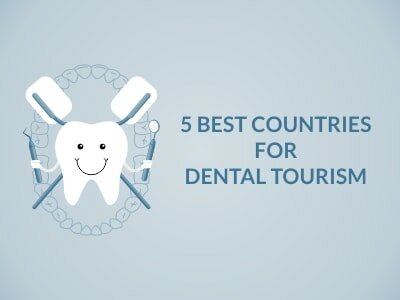The Difference between Clear Braces and Invisalign | Denatl Care | Frankit

Long before the advent of even ceramic braces (circa 1980s), orthodontists treated patients with crooked, crowded or misaligned teeth by fitting metal braces. These metal braces, which had prominent metal brackets were irremovable and embarrassing to sport. They also involved hassles such as, imposing restrictions on consumption of certain foods and required significant maintenance. The duration of the treatment was also longer. Besides, there was always the risk of the braces causing injury to gums or cheeks. Back then, if one was extremely conscious of the wire-based devices, the only available option was to go for lingual braces. Lingual braces were the clear braces of those times, as they are attached to the back of the teeth. However, with advancements in orthodontic treatments metal braces nowadays come with smaller brackets and are less visible.
One can also get coloured archwires and bands attached to the traditional metal braces, which are still considered the most effective dental treatment for complex orthodontic problems. Apart from the above, orthodontic treatments involve correcting malocclusion and misaligned jaws. Even cases of sleep apnoea or dental issues caused by thumb sucking as a child are treated.
Even as metal braces continue to be the favoured choice owing to their affordability and efficacy, ‘ceramic’ or ‘clear’ braces are another option. ‘Clear’ or ‘invisible’ braces are the rage nowadays amongst teens and adults. They are virtually invisible, are as effective as braces and aesthetically superior to metal braces. The braces are made of ceramic or porcelain, and in some cases plastic too. Here, the brackets are clear or coloured as per the shade of the teeth.
It blends with the teeth, thus giving a natural look to the mouth. The accompanying wire is also clear, which makes the overall braces even less visible. While ceramic braces make for an excellent option owing to the invisibility they offer, the treatment is expensive. It is priced at anywhere between $4,000-$8,000 . It is also time-consuming as more modifications are required because the teeth move slowly due to less pressure put on the brackets.
Ceramic braces are more delicate than metal braces too. They also need to be kept clean, as any discolouration in any part of the braces will immediately lead the braces to be visible. With the arrival of ‘clear aligners’ in early 2000, patients seeking discreet orthodontic treatment could choose an extremely sophisticated, hassle-free, new-age option. The aligners were accidentally invented as an improvised version of retainers.
The invention of aligners was a pioneering achievement as it did away with some of the disadvantages of metal and ceramic braces. The aligners are distinct from invisible braces, in that they do not have metal brackets, bands or archwires. They resemble a denture somewhat, albeit a transparent one and are hollow. The aligners fit over the teeth snugly and are virtually invisible. The aligners are a removable transparent tray of plastic and are easy to use. They need to be used for upto 15 months on an average. Currently, the aligner segment is led by Invisalign®. Invisalign® is an advanced, custom-made clear aligner in orthodontic treatment to realign crooked teeth to enhance one’s smile.
Invisalign® braces’s design is computer-generated and is unique to every individual. It is a convenient method of straightening teeth, in that it is removable and requires zero to minimum maintenance. Thus, one can easily carry out brushing, flossing, eating and drinking. One can also participate in sports activities without the need for a mouthguard. As it is made from plastic it is much safer too. Apart from teeth straightening, Invisalign® is used to treat orthodontic problems such as crowded teeth, overbite, underbite, crossbite, gap in teeth and open bite. However, even as they are most convenient, clear aligners entail certain responsibilities on the part of the patient. Being removable, it is very likely that the patient may forget to put it on or misplace it, thereby incurring additional replacement expenses and lengthening the duration of the treatment. Also, this treatment is usually recommended for adults as their teeth and jaws are developed. Children are thus excluded from this treatment.
As Invisalign® is an advanced orthodontic treatment, it is priced higher than regular and ceramic braces. The average cost as per the manufacturer is between $3,500-$8,000 . In India, getting an Invisalign® treatment costs anywhere between Rs 1,50,000 to Rs 3,50,000 . The expenses incurred on the treatment depend on the complexity of the patient’s case, the duration of the treatment and the provider of the treatment. Nevertheless, one’s dental insurance plan may cover some percentage of the Invisalign® treatment or pay upto some amount. If the dental or health plan does not cover orthodontic treatment, one can buy a separate orthodontic insurance cover. Alternatively, Invisalign® also allows for a monthly payment plan. Here, one gets into an arrangement with the orthodontist to pay for the expenses over the length of the treatment. For citizens of US and Canada, pre-tax dollars may be set aside for these treatments in a flexible spending account, health savings account, health reimbursement account or medical savings account. Also in US, insurance may cover upto $3,500.
Same treatment is offered by Fortis Healthcare and Apollo WHITE, a first-of-its-kind dental care brand by Alliance Dental Care. A look at the following table gives a peek into the cost of Invisalign® treatment across the major countries/regions.
| Country/Region | Cost |
|---|---|
| Europe | €2,500-€5,000 |
| USA | $4,000-$10,000 |
| Canada | $2,500-$7,500 |
| Thailand | $2,248 |
| Malaysia | $1,953 |
| Singapore | $4,500-$7,500 |
When undergoing an orthodontic treatment, the importance of retainers cannot be underestimated. On completion of the stipulated time period of using braces, metal or aligners, teeth retainers are given by orthodontists to hold the teeth in their newly adjusted position. Retainers are not only good for dental problems, but also aid in correcting speech problems.
It is also entirely possible to straighten teeth without braces. In such cases, an orthodontist may recommend fixed or removable retainers. Also, some devices such as the Herbst appliance straightens teeth by correcting jaw imperfections. Headgear is another device to straighten teeth. Also, palatal expanders are used to widen the arch of the upper teeth, thus creating space for the teeth to move naturally into their correct positions.
Given the options in acquiring a beautiful smile, there sure is a wide array of treatments to choose from.















